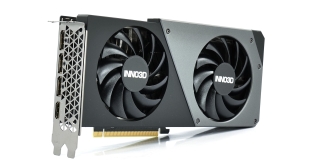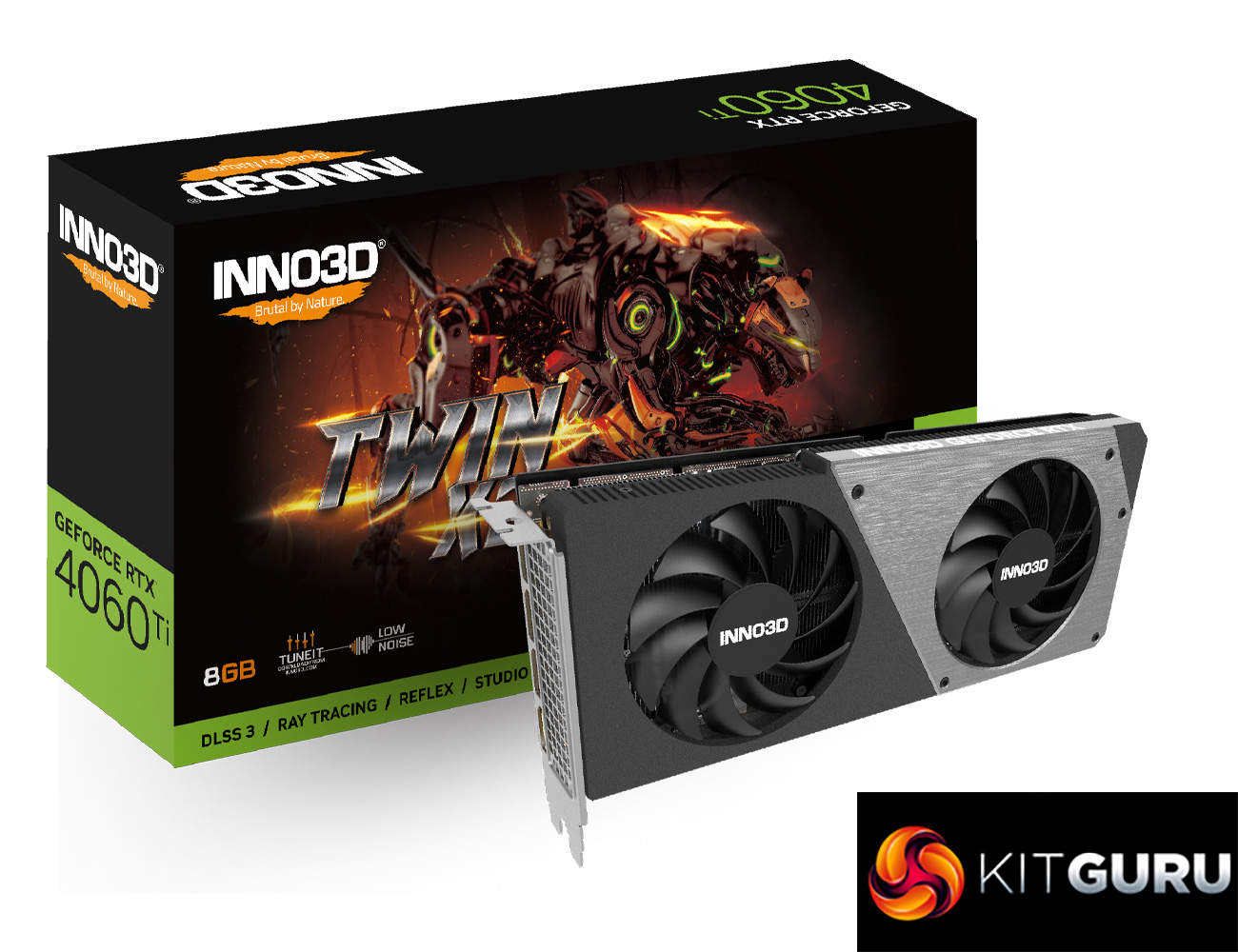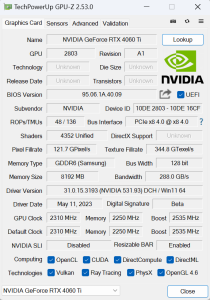
In for review today is the Inno3D RTX 4060 Ti Twin X2. Built to hit the £389 MSRP, this card offers a compact design, dual-fan cooler and metal backplate. It's certainly nothing fancy and doesn't even come factory overclocked, but if you're looking for a simple card that just works – with no faffing around with RGB lighting or multiple BIOS modes – could the Twin X2 be one to consider?
It's safe to say we were less than positive with our RTX 4060 Ti in our day 1 review, so it will be interesting to see if the Inno3D RTX 4060 Ti Twin X2 can change our views. Currently up for pre-order at £389.99 from OCUK, it is at least one of the most affordable partner cards, and you're not paying a price premium over the £389 MSRP.
But with the Founders Edition in stock at the same price, how will the Twin X2 compare in terms of gaming performance, thermals and noise levels? We find out today.
| RTX 4090 | RTX 4080 | RTX 4070 Ti | RTX 4070 | RTX 4060 Ti | RTX 3060 Ti | |
| Process | TSMC N4 | TSMC N4 | TSMC N4 | TSMC N4 | TSMC N4 | Samsung 8N |
| SMs | 128 | 76 | 60 | 46 | 34 | 38 |
| CUDA Cores | 16384 | 9728 | 7680 | 5888 | 4352 | 4864 |
| Tensor Cores | 512 | 304 | 240 | 184 | 136 | 152 |
| RT Cores | 128 | 76 | 60 | 46 | 34 | 38 |
| Texture Units | 512 | 304 | 240 | 184 | 136 | 152 |
| ROPs | 176 | 112 | 80 | 64 | 48 | 80 |
| GPU Boost Clock | 2520 MHz | 2505 MHz | 2610 MHz | 2475 MHz | 2535 MHz | 1665 MHz |
| Memory Data Rate | 21 Gbps | 22.4 Gbps | 21 Gbps | 21 Gbps | 18 Gbps | 14 Gbps |
| L2 Cache | 73729 KB | 65536 KB | 49152 KB | 36864 KB | 32768 KB | 4096 KB |
| Total Video Memory | 24GB GDDR6X | 16GB GDDR6X | 12GB GDDR6X | 12GB GDDR6X | 8GB GDDR6 | 8GB GDDR6 |
| Memory Interface | 384-bit | 256-bit | 192-bit | 192-bit | 128-bit | 256-bit |
| Memory Bandwidth | 1008 GB/Sec | 716.8 GB/Sec | 504 GB/Sec | 504 GB/Sec | 288 GB/Sec | 448 GB/Sec |
| TGP | 450W | 320W | 285W | 200W | 160W | 200W |
First, for a quick spec recap. The RTX 4060 Ti marks the first appearance of the AD106 silicon in the desktop space, a tiny die measuring just 190mm2. The fundamental building blocks are still the same of course, with the RTX 4060 Ti offering a total of 34 Streaming Multiprocessors (SMs), each housing 256 CUDA Cores, for a total of 4352. We also find 34 RT cores, 136 Tensor cores, 136 Texture Units, and 48 ROPs.
TSMC's N4 node has Nvidia cranking up the clock speed significantly this generation, with the RTX 4060 Ti sporting a 2535MHz rated boost clock. That's the highest clock speed on a desktop Ada GPU so far, and we would expect GPU Boost to push things further still. Inno3D has not factory overclocked the Twin X2.
The memory configuration is another area where AD106 has been cut-back significantly. The memory interface has been reduced to 128-bit, and even with 8GB GDDR6 running at 18Gbps, that brings total memory bandwidth down to 288 GB/s, lower than even the RTX 3060. That said, there has been a substantial upgrade to the L2 cache with the Ada architecture, with the RTX 4060 Ti now offering 32MB, compared to just 4MB for GA104.
It's also worth noting that the PCIe bus has also been reduced, with the 4060 Ti offering a Gen4 x8 interface, as opposed to Gen4 x16 connectors on the rest of the 40-series.
Considering these cut-backs, power draw is naturally lower than the RTX 4070, with the 4060 Ti boasting a 160W TGP. Inno3D has not increased the power target either, nor can it be increased above the 160W figure when manually overclocking.
 KitGuru KitGuru.net – Tech News | Hardware News | Hardware Reviews | IOS | Mobile | Gaming | Graphics Cards
KitGuru KitGuru.net – Tech News | Hardware News | Hardware Reviews | IOS | Mobile | Gaming | Graphics Cards




